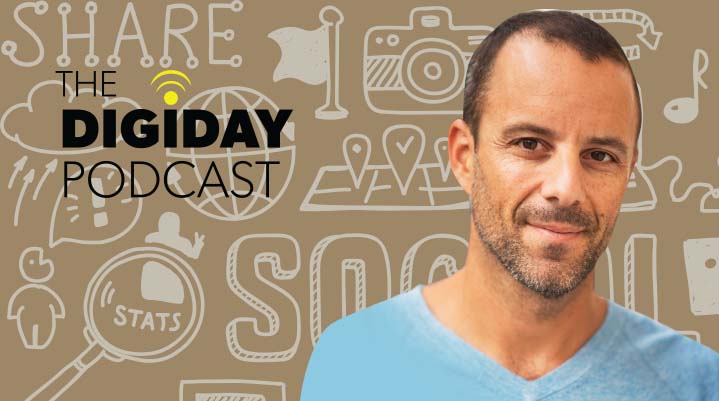HuffPost’s Jared Grusd: Subscriptions won’t work for most publishers

Subscribe: iTunes | Google Play | Stitcher | Anchor
The New York Times has proved to be a success story for publishers contemplating a pivot to subscriptions. But HuffPost CEO Jared Grusd says a subscription business is not for everyone, particularly digital-first news media organizations.
“A lot of people look at the New York Times as a gold standard,” said Grusd on the Digiday Podcast. “But [you have to] establish a brand that over a long period of time stands for something so great, and there’s a strong enough connection with your audience that a meaningful number of people would reach into their pocket. Most digital-first news and media organizations are not there yet in terms of their relationship.”
Grusd discusses broadening focus beyond the Trump news cycle, the importance of scale, HuffPost’s plan for video and more in the episode. Edited highlights appear below:
Ad position: web_incontent_pos1
Focusing on monetization
“How do I build content people want to consume? How do I find audiences? How do I monetize those audiences? The key strength of HuffPost is in the second and third questions. HuffPost grew on the back of SEO. It figured out social and now is publishing well on all platforms. The challenge all of us are facing is the monetization on each of the platforms. We’re seeing dislocation in the ad markets. Even if we found audiences, can monetization catch up with that?”
Scale remains important
“HuffPost is a scale model. Our goal is to maintain scale, but go deeper. The formula is not rocket science. We’re making a big bet in terms of quality and differentiation. Some of the tactics that we were pioneers of in the industry — like creating a blogging network, which some publishers are adopting in 2018 — we’re moving away from it. We’re also moving away from user-generated content. Instead, we’re investing in our own journalism. If we can continue to establish our brand and editorial strategy, will that resonate more with our audience versus using tactics to get as many people in the funnel as possible?”
Going beyond the Trump news cycle
“We haven’t left Trump news cycle behind. We’re trying to build an organization that can endure for a long period of time. One of the false dangers from a media company perspective is if the growth of your brand and traction of your audience is really specific to this exact political moment in time, what happens if this moment changes and people get sick of the story, and your brand only stood for the one thing? We’re trying to be not driven by stories, but by particular connections with the audiences underserved by the media. That’s delivering news, social and lifestyle content.”
Ad position: web_incontent_pos2
HuffPost’s approach to video
“We did pivot to video, but we were cautious. We experimented on short-form video on Facebook, Snapchat and YouTube, and for a couple-year period, we were able to grow our Facebook video views to a billion views a month. We were making very little money. The story you had to tell was either money is going to come, and/or our videos are so great that we’re able to track audiences. So you have to evaluate if people are connecting to videos or not. We’re still a mixed bag in terms of video. We are doing more shows, higher-level, higher costs of programming that we will launch by the end of this year.”
More in Media

NewFronts Briefing: Samsung, Condé Nast, Roku focus presentations on new ad formats and category-specific inventory
Day two of IAB’s NewFronts featured presentations from Samsung, Condé Nast and Roku, highlighting new partnerships, ad formats and inventory, as well as new AI capabilities.

The Athletic to raise ad prices as it paces to hit 3 million newsletter subscribers
The New York Times’ sports site The Athletic is about to hit 3 million total newsletter subscribers. It plans to raise ad prices as as a result of this nearly 20% year over year increase.

NewFronts Briefing: Google, Vizio and news publishers pitch marketers with new ad offerings and range of content categories
Day one of the 2024 IAB NewFronts featured presentations from Google and Vizio, as well as a spotlight on news publishers.
Ad position: web_bfu



